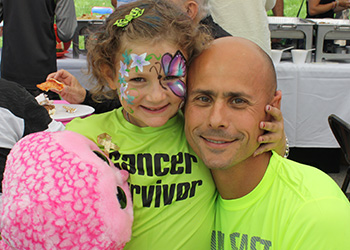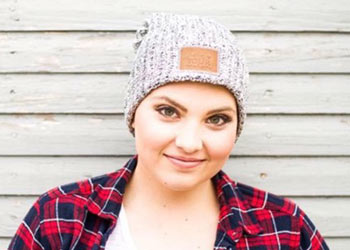“We were fortunate that CureSearch had just launched their Catapult Award program….It enabled researchers to access up to $2.5M in funding over three years, through a streamlined application process, rather than contending with multiple applications for smaller grants which would have lengthened timelines.”
DR. RANJIT BINDRA, YALE SCHOOL OF MEDICINE
Dr. Ranjit Bindra is a physician-scientist at the Yale School of Medicine and Co-Director of the Yale Brain Tumor Center, and previous Young Investigator and Catapult Award receipient. In 2015, Dr. Bindra and his team made the startling discovery that IDH1/2-mutant tumors harbor a profound DNA repair defect that renders them sensitive to PARP inhibitors and began creating a path for clinical trials in adults.
He then recognized that AYA patients with high-grade gliomas that harbor IDH mutations could also greatly benefit from these clinical trials and Dr. Bindra began to work with Dr. Asher Marks, Medical Director of the Pediatric Neuro-Oncology Program at Yale, to ensure that patients under the age of 18 could receive this treatment through a clinical trial.
“When we initially looked at the pediatric data for 0–18 years, this was a fairly rare mutation that came up in maybe 2% of high-grade gliomas and garnered little interest,” explains Dr. Marks. “However, when we parsed the data for patients ages 13–25 years old the frequency started to go up, all of sudden we were seeing it in 30% of cases.”
While clinical trials for adults are set up in a faster pace and are well-defined, pediatric trials are not. This required the Yale team’s industry partner, BeiGene, to agree to take on the risk of providing their PARP inhibitor for a pediatric trial.
Drs. Bindra and Marks were able to move forward with a trial design focused on an AYA population, going from bench to clinic in under 18 months. Dr. Bindra emphasizes that this incredible achievement was made possible through collaboration with three key partners: the Pacific Pediatric NeuroOncology Consortium (PNOC), CureSearch and BeiGene.
“PNOC focuses on rapid bench to bedside research and thought this was a great concept, even though it was very much pushing the envelope,” notes Dr. Bindra. “Their backing was a tremendous step forward,” adds Dr. Marks. “However, they don’t offer significant funding. We needed foundation support.” Applications for NIH grants came up against the typical barriers encountered when targeting a small group of patients. “We’re talking subsets of subsets,” Dr. Bindra emphasizes. Funding, as is often the case in pediatric cancer, would need to come from patient organizations.
“We were fortunate that CureSearch had just launched their Catapult Award program,” notes Dr. Bindra. The award funds Phase I or Phase II trials that can get high-potential research out of the lab and into the clinic for researchers with industry partners committed to taking these onward to commercialization. “The Catapult mechanism was highly innovative at the time,” Dr. Bindra shares, “It enabled researchers to access up to $2.5M in funding over three years, through a streamlined application process, rather than contending with multiple applications for smaller grants which would have lengthened timelines. We had partnered with BeiGene, who had agreed to provide therapeutic product and we had the support of PNOC which gave CureSearch confidence in its potential. They were able to turn the application around in under a year which allowed the pediatric program to keep pace with adult program development.”
Overcoming institutional barriers was a final, but considerable challenge. Targeting a patient population of 13–35 years old required navigating different regulatory mechanisms between the oncology IRB and pediatric IRB and confronting the highly siloed working of adult and pediatric oncology teams. Dr. Marks feels strongly that cutting across these siloes has the potential to enable better science. “By bridging that gap, I think we’d start to see more trials in AYA populations and see those trials aligned with adult trials run in a similar fashion so that we could compare the data and we’d start to see some interesting things as we did when we looked at data for patients ages 13–25,” he says.
Tackling those barriers laid the groundwork for a smoother process for implementing AYA trials and the center now has several adult brain tumor trials open to pediatric populations. “We have now enrolled 3 pediatric patients into another trial that was originally designed for adults only,” highlights Dr. Marks. Of the incredible success of taking this innovative therapeutic approach from the bench to the clinic and to pediatric cancer research, Dr. Bindra notes, “It always comes down to being able to find people who are going to be champions and take risks.”
This case study was taken from The RACE for Children Act: How Industry Can Accelerate Readiness Through Collaboration With Patient Organizations, written by PRA Health Sciences in collaboration with CureSearch for Children’s Cancer, to read the full paper, click here.



